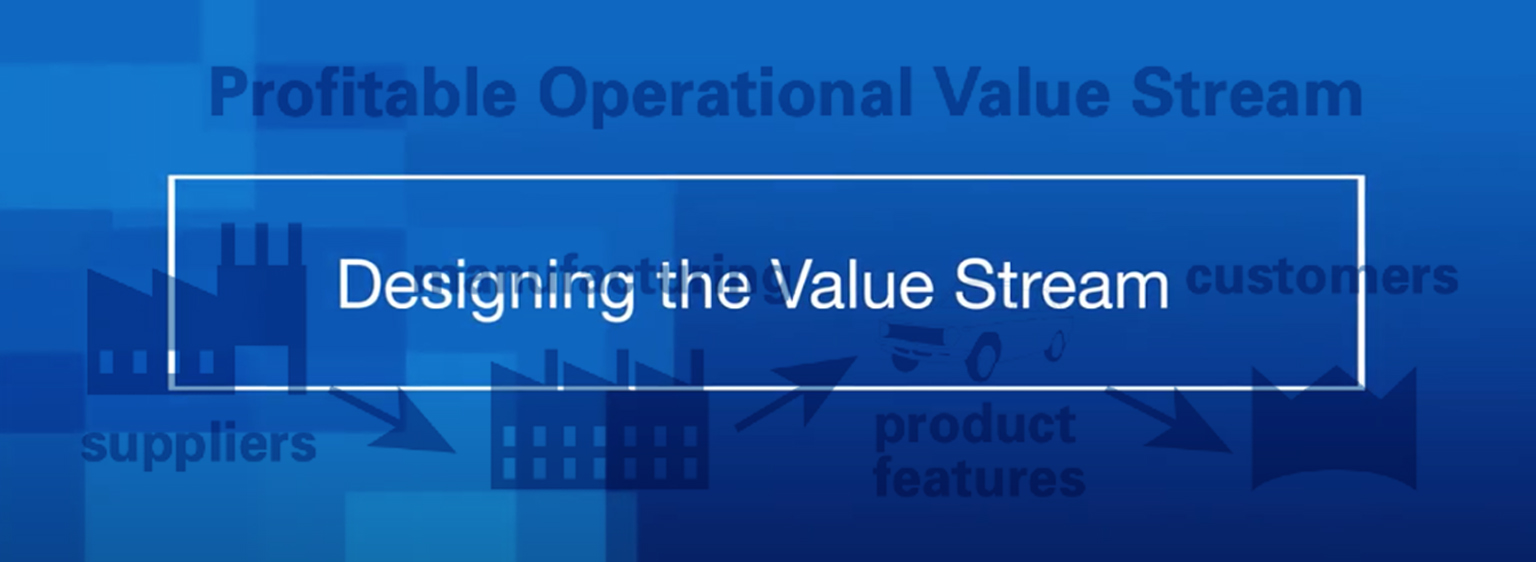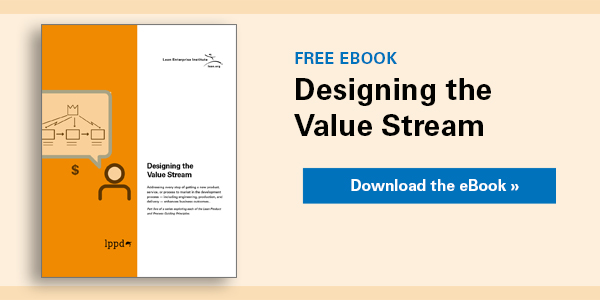“An important difference between a lean approach to development and traditional methods is that instead of designing a product and then ‘throwing it over the wall,’ we focus on creating a value stream,” asserts Jim Morgan, LEI senior advisor for lean product and process development (LPPD). “And that means,” he explains, “intentionally designing each value-creating step required to deliver value to your customer — steps like manufacturing, logistics, and serviceability, which are all critical considerations when you think about the total value proposition for your customer.”
This practice is so essential to developing new products, processes, and services that LEI’s LPPD team identified Designing the Value Stream as one of several LPPD guiding principles.
Led by Morgan, the coauthor of The Toyota Product Development System (2006) and Designing the Future (2019), the team has distilled what it’s learned from real-world experience and research into the principles and practices of successful development teams. By sharing the guiding principles, LEI’s LPPD team aims to help other organizations worldwide improve their development processes and build a global community that will share their experiences to advance the art and science of creating new value.
Click here for an infographic and a quick-read summary of the guiding principles.
See the Lean Posts and related ebooks detailing other guiding principles:
- Developing Products is a Team Sport
- Understanding Before Executing
- Building in Learning and Knowledge Reuse
- Synchronizing Workflows
Explore the principle of Designing the Value Stream
In the video below, two of our partner companies share their experiences creating profitable new value streams.
- A team from TechnipFMC, an energy technology company, explains how they made a path-breaking product even better by expanding their design horizon to include improving the overall value stream.
- Pella Corporation’s Continuous Improvement Manager Jaime Ogbourne, shares how LPPD-enabled improvements in engineering increased development throughput to the point that it eventually overwhelmed manufacturing. Then he describes how changing to a value-stream approach to their LPPD work in the form of Operational Readiness Levels (ORLs) helped them resolve that problem.
Three Lean Posts offer more in-depth information about how and why designing the value stream can ensure new product, process, and service success.
- How Designing Value Streams, Not Just Products, Creates Competitive Advantage
- Designing the Entire Value Stream from Concept to Product End of Life
- Create Profitable Value Streams
For offline reading, download the ebook (PDF), which features the three Posts and other information, is another way to access these crucial insights.
Designing the Future
An Introduction to Lean Product and Process Development.






